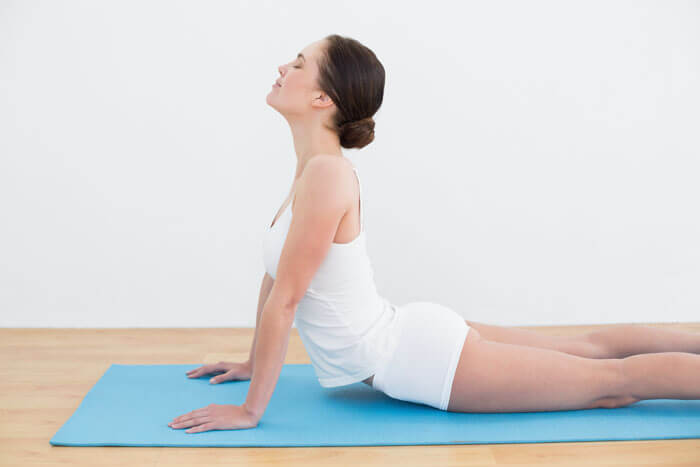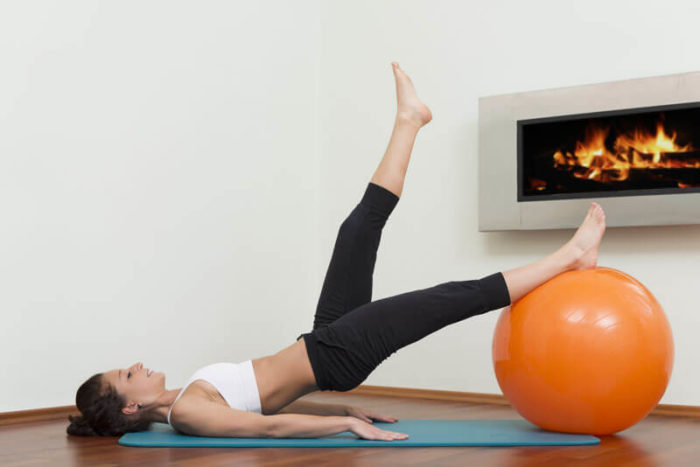Stretching to Relieve Back Pain: A Practical Guide
At this very moment, there are tens of millions of people wishing there were a magical cure for back pain. After all, back pain is the single leading cause of disability in the world, with experts estimating that upwards of 80% of the population will at one time or another experience back pain. Further, Americans alone spend an estimated $50 billion per year on back pain.
While no one magical cure exists, for many people suffering from back pain, there is an easy and inexpensive way to find relief from back pain. It’s exercise, and this is a comprehensive guide to exercise for back pain relief.
An Overview
An exercise program for back pain is one that must be carefully undertaken. When done in a controlled and gradual manner, exercising can help keep the ligaments, discs, muscles, and joints of the back healthy. However, when done in an uncontrolled and overly aggressive manner, exercising may worsen back pain or cause new injuries.
A successful exercise program for lessening or eliminating back pain has three components: low-impact aerobic exercise, stretching and strengthening. Though the back is obviously the focus of the majority of the exercises, the program will work the entire body in order to improve overall strength and health, which will positively impact the spine.
If you have a pre-existing back issue or any other health condition, you may want to consult with your doctor before beginning an exercise program.
Low-Impact Aerobic Exercise for Back Pain Relief
Low-impact aerobic exercise, also known as cardiovascular exercise, provides several key benefits for people dealing with back pain. Firstly, aerobic exercise helps encourage the flow of blood and nutrients to the back and its supporting structures to support healing while decreasing stiffness in the joints.
Aerobic exercise also increases the production of endorphins, which act as a natural painkiller, keeping pain signals from reaching the brain. Endorphins also help improve mood and fight depression, stress, and anxiety that may accompany chronic back pain. Furthermore, aerobic exercise helps keep back pain patients functional and mobile and can help control weight, which decreases the stress placed on the muscles and ligaments of the back.
Some people who experience back pain may not have their mobility or ability to exercise affected and can complete any form of aerobic exercise they like, including high-impact exercises like running. However, many people will be better off pursuing low-impact forms of aerobic exercise. These include:
- Swimming or water aerobics
- Using a stationary bike
- Using an elliptical machine or step machine
- Walking
Health guidelines generally recommend at least 20 minutes of aerobic exercise in order to improve cardiovascular strength and function. Thirty to forty minutes of aerobic exercise will help produce endorphins.
Stretching for Back Pain Relief

Your spinal column and all of its surrounding ligaments, muscles, and joints were designed to help your body move. Limitations placed on this movement can in some cases cause back pain, or make existing back pain worse. The key to restoring or improving your back’s range of motion is stretching.
Stretching isn’t a quick fix. Though stretching will likely bring immediate relief to the tension you are feeling in your back, it may take weeks to improve your body’s flexibility. But while stretching isn’t necessarily a fast fix, it is an effective one. Working a regular stretching routine into your life will most likely provide you with significant and sustained back pain relief.
When stretching, you’ll want to move into the stretch slowly and gradually without any sort of bouncing. You should aim to hold each stretch for 20-30 seconds and repeat each stretch at least five times for maximum effectiveness. Wear loose, comfortable clothing, and make sure you have plenty of room on a flat surface to complete your stretching routine.
Shoulder and Neck Stretches

If the pain you are experiencing is in the upper back, shoulder or neck area, you will benefit from these next stretches.
- Ear to Shoulder Stretch
Gently bend your neck so your right ear is moving towards your right shoulder until you can feel the stretch in the left side of your neck. Hold, then return the head to starting position and bend your neck so your left ear is moving towards your left shoulder, stretching the right side of your neck. Repeat. - Chin to Chest Stretch
Gently bend your head forward, bringing your chin in towards your chest until you feel the stretch in the back of your neck. Hold, then repeat. - Back Stretches
These stretches to target your whole back, bringing relief from tension and discomfort and increasing your flexibility. - Body Ball Stretch
Lie flat on your back to start. Slowly pull both knees to your chest and flex your head forward to form a loose ball with your body, feeling the stretch all along your spine. Hold, then repeat. - Knee to Chest Stretch
Lie on your back with your knees bent and feet flat on the floor. Place both of your hands behind one knee, then slowly pull your knee towards your chest until you can feel the stretch along your lower back and through your hip. Hold, then return your leg to its starting position. Repeat with the other leg.
Hip and Buttock Stretches

The hips and buttocks (including the gluteus muscles) support the lower back, and maintaining the flexibility of these areas is integral for avoiding or reducing lower back pain.
- Hip Stretch
Picture this stretch as a partial lunge. Start with your feet shoulder-width apart, then take a small step forward with your left foot. Bend your left knee and sink into the move a bit, shifting your weight back to your right leg, keeping it straight, until you feel a stretch in the outer hip of your right leg. Hold, then repeat, switching legs. - Butt Muscle Stretch
The technical name of the muscle you are stretching with this move is the piriformis muscle, but butt muscle is easier to remember. Lie on your back with your legs at a 45-degree angle, feet flat on the floor. Cross your right ankle over your left knee so you are forming a triangle with your legs. Pull your left knee gently towards your chest, bringing your right leg towards your chest with it until you feel a stretch in your right buttock. Hold, then repeat with your left ankle over your right knee.
Hamstring Stretches

Keeping your hamstrings loose is important for maintaining a full range of motion in the pelvis, which in turn decreases the stress across the lower back.
- Toe Touch
This is one of the most basic stretches there is. Stand up straight with your feet apart, then bend forward at the waist and try to touch your toes, feeling the stretch in the backs of your thighs. Hold. Do not strain to actually touch the toes if it doesn’t come naturally to you; your flexibility will improve as you continue with your stretching routine. - Towel Stretch
Lie flat on your back on the floor with your legs extended straight out in front of you. Loop a towel (or belt) around the ball of your right foot, holding an end of the towel in each hand. Pull your right leg straight up into the air using the towel, taking care to keep your leg as straight as you can, until you feel the stretch through the back of your right leg. Hold, then repeat with the left leg. - Back Strengthening Exercises for Back Pain Relief
Having a strong, conditioned back will help relieve or eliminate back pain by being able to withstand more stress, avoiding or minimizing injuries. A strong back also better protects the spine. Improving the strength of your back means working on your entire core, building up the muscles in your back, abdomen, buttocks, and hips. Try these next few moves, being careful to gradually ease into more reps. - Back Bridge
Lie flat on your back with your knees bent at a 45-degree angle, feet flat on the floor about hip-width apart. Lift your hips off the ground until you have achieved a straight line from your knees to your shoulders. Squeeze your buttocks while doing the move and hold for the count of two, then slowly lower yourself to the starting position. Repeat 4-5 times to start, building up to 10-12 repetitions. - Side Plank
Lie on your right side with your body straight and your feet together. Rest on your forearm with your elbow under your shoulder. Pull your abs in towards your spine, then left your hips off the ground, doing your best to maintain a straight line from your shoulder to your ankle. Hold for as long as you can with a goal of working your way up to 20-30 seconds. Repeat 2-3 times per side. - Lunges
Stand up straight with your hands on your hips, feet shoulder-width apart. Take a sizable step forward with your right foot, then sink your left knee down until your right knee is bent at a 90-degree angle. Push back to your starting position and repeat 8-12 times, then switch legs. Take care to not lean too far forward with the move. Always keep your front knee from extending out past your front toe. - In Conclusion
All back pain is different, and only you and your doctor know what you are capable of. Don’t feel you have to throw yourself into a full exercise routine in order to relieve back pain. One or two stretching moves and 20 minutes worth of low-impact aerobic exercise a few times a week is a great start to getting your back strong, healthy and pain-free. Pushing yourself too hard may result in injury or worsened pain, so always pay attention to how you’re feeling as you’re doing any of these moves, and be sure to check with your doctor about any concerns you may have.
